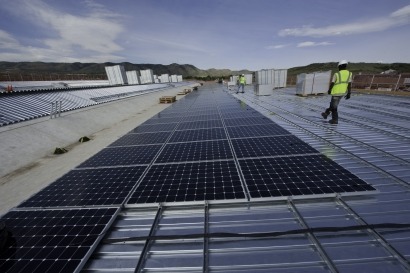
In 2016 power from hydro, wind, solar and other renewables will exceed that from gas and be twice that of nuclear says the International Energy Agency (IEA) in its second annual Medium-Term Renewable Energy Market Report (MTRMR).
The report predicts an increase in renewable power of around 40 percent within the next five years, up from an estimated 20 percent in 2011, given that renewables are now the fastest-growing power generation sector and will comprise almost a quarter of the global power mix by 2018. The share of non-hydro sources, such as wind, solar, bioenergy and geothermal, will double to 8 percent by 2018, up from 4 percent in 2011 and just 2 percent in 2006.
“As their costs continue to fall, renewable power sources are increasingly standing on their own merits versus new fossil-fuel generation,” said IEA Executive Director Maria van der Hoeven. “This is good news for a global energy system that needs to become cleaner and more diversified, but it should not be an excuse for government complacency, especially among OECD countries.”
Nevertheless, the MTRMR also urges caution in the face of increasing complexity and numerous challenges, particularly with regards to policy. The debate over the costs of renewable energy support policies is increasing along with the amount of policy uncertainty for investors.
“Many renewables no longer require high economic incentives” Ms van der Hoeven added, “But they do still need long-term policies that provide a predictable and reliable market and regulatory framework compatible with societal goals. And worldwide subsidies for fossil fuels remain six times higher than economic incentives for renewables.”
The positive outlook for renewables is being driven by two main factors, specifically the acceleration of investment and deployment in emerging markets and secondly increasing cost competitiveness. In developing countries renewables are helping to address increasing demand issues, energy diversification needs and local pollution concerns while also mitigating climate change. Between now and 2018 non-OECD countries, including China, are expected to account for two-thirds of the global increase in renewable power generation. This in turn will help to compensate for slower growth in other areas such as Europe and the US. With regards to cost-competitiveness, wind is competing well with new fossil-fuel plant in several markets, such as Brazil, Turkey and New Zealand. Solar is also attractive in markets with high peak prices for electricity.
The MTRMR also sees biofuels gaining in transport sectors and as renewable sources of heat, albeit at a slower growth rate than for electricity. Biofuels should account for nearly 4 percent of global oil demand for road transport by 2018, up from 3 percent in 2012.
Further information:

